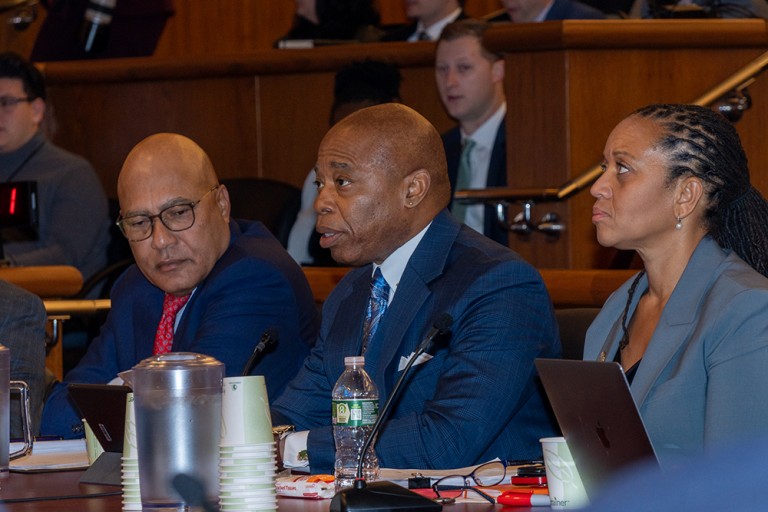By Michael V. Cusenza
Mayor Eric Adams on Tuesday provided testimony to the State Senate Finance and Assembly Ways and Means committees, focusing on the administration’s Albany agenda to advance working-class families through extending mayoral accountability for four years, granting the city authority to shut down illegal smoke shops and creating more affordable housing. Finally, Adams outlined the City’s fiscal challenges, including state funding for asylum seekers and increasing Gotham’s debt limit.
“Protecting public safety means granting New York City the power to shut down illegal smoke shops, so New Yorkers can walk down the street without being bombarded by illegal shops that operate outside the law and put young New Yorkers at risk,” Adams said. “Rebuilding our economy means creating homes New Yorkers can afford, so working-class families can earn a living, raise their kids, and make it in the greatest city in the world. It also means preparing our young people to succeed. Reading and math test scores are up, and we are outpacing the state, but if we don’t extend mayoral accountability [of City schools], we risk going backwards.”
Adams then addressed NYC’s migrant crisis.
“Making this city more livable means investing in cleaner streets and more vibrant public spaces. To continue those investments, we need financial support to cover the costs of the asylum seeker humanitarian crisis,” Hizzoner said. “New York City is proud to uphold our legacy as a city of immigrants. And we are proud that we have demonstrated leadership and compassion, when so many others showed only cruelty.
“Over the past 22 months, we have provided more than 173,900 asylum seekers with food, medical care, and shelter. Of those, we’ve helped more than 107,500 — more than 60 percent — take the next step on the path to self-sufficiency. We have helped tens of thousands file Temporary Protected Status, asylum, and work authorization applications, bringing them one step closer to living a more stable life.
However, right now, there are more than 66,200 asylum seekers still in the city’s care. When you add in the 55,000 longtime New Yorkers in the city’s [Department of Homeless Services] system and well as others, that means we have close to three times the number of people in our shelter system than when we came into office. And it all comes at a great cost to our city.
“In November, due to the growing asylum seeker humanitarian crisis, sunsetting federal stimulus that was used to support vital programs, and the cost of funding long-ignored labor contracts, we faced a historically large $7.1 billion budget gap.
“So we developed our financial plan without relying on federal assistance because, after many trips to Washington, D.C., I realized that the federal cavalry was not coming to the rescue. We did not procrastinate.
“We knew that the faster we made the painful, but necessary, decisions, the faster we could stabilize the city’s finances. We frontloaded our implementation of the plan, which includes multiple rounds of savings through our Plan to Eliminate the Gap, or PEG, a hiring freeze, and a freeze on other-than-personal-services spending, among other things.
“But I need to be crystal clear—although we have stabilized our financial situation through hard work and advanced planning, we are not out of the woods,” Adams said.

